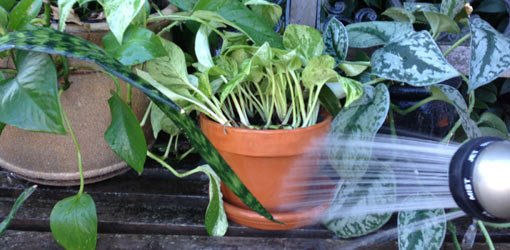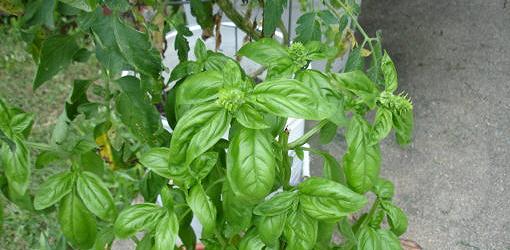Roundup, a popular glyphosate-based weed killer, is a go-to solution for many homeowners battling unwanted plants in their yards. However, after applying this herbicide, you’ll need to know when it’s safe to plant new vegetation again, for the health of your future plants. While Roundup effectively eliminates weeds, understanding its residual effects and the appropriate waiting periods for planting can make a big difference in a garden’s success.
Understanding Roundup and Its Effects
Roundup, with the active ingredient glyphosate, is a systemic herbicide that works by preventing the enzyme plants need to grow. When applied to weeds, it’s absorbed through the leaves and travels into the plant, eventually killing it from the roots up. While glyphosate is considered relatively safe due to its quick breakdown in the environment, it’s important to understand its effects before planting new vegetation.
How Roundup Works
Glyphosate targets an enzyme pathway found only in plants, making it effective against a wide range of weeds without directly harming animals or humans. When sprayed on weeds, Roundup is absorbed through the foliage and moves systematically through the plant. This process can take several days, and the weed will gradually wilt and die.
Breakdown in Soil
One of the advantages of glyphosate is its relatively short time in soil. Under ideal conditions, glyphosate can break down in as little as a few days to a few weeks. However, soil composition, temperature, and moisture can all affect this breakdown process. In some cases, traces of glyphosate may remain in the soil for longer periods, potentially affecting new plantings if not given enough time to dissipate.
Recommended Waiting Periods for Planting
The waiting period for planting after using Roundup varies depending on the type of vegetation being planted and the specific Roundup product you used. While the manufacturer provides general guidelines, it’s often wise to err on the side of caution and allow for additional time.
Ornamental Plants and Trees
According to Scotts, the manufacturer of Roundup, it’s safe to plant ornamental flowers, shrubs, and trees the day after applying Roundup. However, for best results and to give the herbicide enough time to work effectively, wait a few days. This extra time allows the herbicide to better absorb into the weeds, and gives it more time to break down in the soil.
Grass and Edible Plants
For grasses and edible plants, Scotts recommends waiting three days after application before planting. This longer waiting period is important for several reasons. First, it allows enough time for the herbicide to be fully absorbed by weeds and gives it an opportunity to breakdown in the soil. It also reduces the risk of residual glyphosate affecting new plantings.
Considerations for Longer Waiting Periods
While the manufacturer’s recommendations give a baseline, there are situations where waiting longer may be beneficial. Heavy weed infestations might need more time to completely die-off, and cooler temperatures can slow down both weed death and herbicide breakdown. On top of that, certain soil types may retain the herbicide longer. In these cases, waiting 5-7 days, or even up to two weeks, can provide better results and reduce the risk of affecting new plantings.
Factors Affecting Planting Time After Roundup Use
Several factors can influence how long you should wait to plant after using Roundup. Understanding these can help you make more informed decisions about your planting schedules.
Soil Type and Composition
Different soil types can affect how quickly glyphosate breaks down. Sandy soils allow for faster breakdown due to better drainage and aeration. On the other hand, clay soils may hold onto the herbicide longer, potentially calling for extended waiting periods. Organic matter in soil can help bind and break down glyphosate more quickly.
Weather Conditions
Weather plays a significant role in herbicide effectiveness and breakdown. Warmer temperatures generally speed up both weed death and herbicide degradation. Rainfall soon after you apply Roundup can actually wash away the herbicide before it’s fully absorbed, while drought conditions may slow down the breakdown process in soil.
Application Method and Concentration
How Roundup is applied and its concentration can affect waiting times. Spot treatments typically require shorter waiting periods than larger applications. Higher concentrations of glyphosate may call for longer waiting times. Careful, targeted sprays can reduce your overall soil contamination.
Best Practices for Planting After Roundup Use
For best results when planting after using Roundup, always read and follow the label instructions for the specific product used. Allow ample time for weeds to fully die before disturbing the soil, and use a soil test to check for herbicide residues if you’re concerned they haven’t fully broken down yet.
Soil Preparation Techniques
Good soil prep can prevent the potential negative effects of Roundup. Tilling or turning over the soil helps with aeration and breakdown of any remaining herbicide. Adding organic matter to the soil can improve its structure and boost microbial activity. Additionally, watering the area thoroughly helps flush any remaining herbicide from the root zone.
Choosing Plants for Post-Roundup Planting
Some plants may be more sensitive to potential herbicide residues than others. When planning your garden, consider going with hardy, established plants for your first plantings. Starting with plants that are more tolerant of potential herbicide traces can also be a smart decision. Using container-grown plants with established root systems rather than direct seedlings may have better results in the initial stages of plant growth.
Safety Considerations and Alternatives
While Roundup is effective, it’s important to consider safety and potential alternatives, especially in areas where you plan to grow edible plants.
Safe Use of Roundup
When using Roundup, always wear appropriate protective gear, including gloves and eye protection. Spray it on a sunny, windless day to prevent it from drifting onto plants that you don’t want to kill. Keep children and pets away from treated areas until the spray has dried.
Alternative Weed Control Methods
For those concerned about using chemical herbicides, there are always alternatives. Manual weed removal through pulling or hoeing can be effective against smaller weed infestations. Mulching suppresses weed growth by depriving it of light, and organic herbicides made from natural ingredients provide a more environmentally friendly option.
Further Information
- How to Control Weeds in Your Lawn (article)
- How to Control Dollarweed (Pennywort) (article)
- How to Control Dandelions (article)






